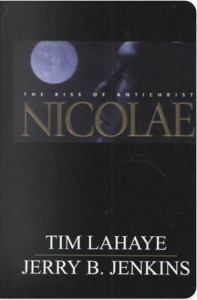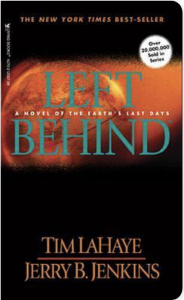C.A. Gray's Blog, page 34
December 13, 2021
Review of The Christmas Pig

I’m so glad that JK Rowling is back to writing children’s stories. (Tried the Robert Galbraith stuff, and… no. Way too gratuitous in almost every way.)
One of the things I love about Rowling’s style is how effortless and yet complex her characterization is. She’s a master of showing, not telling, and communicating in as few words as possible the essence of a character’s emotions. I was concerned she might be putting this skill to depressing use in the set-up of this story, though. Poor little Jack finds himself in the midst of his parents’ divorce, with no one to comfort him but the stuffed pig he’s had since he was tiny, and could only call it “Da Pig”–so his name is DP for short. He makes friends at school with a cool older girl named Holly, who is kind to him until they discover that Jack’s mom is going to marry Holly’s dad. Then, suddenly, Holly hates Jack. A classic step-sibling fight escalates until Holly throws DP out a the car window on a wintry Christmas Eve, and it appears DP is gone forever. When Jack’s grandfather can’t find DP, Holly feels bad and buys him a new pig just like DP, but of course the replacement is nothing to him. Jack is furious and devastated. But then his toys come to life on Christmas Eve night, and the real fantasy story begins. (Finally.)
The new pig, later dubbed Christmas Pig, or CP for short, teaches Jack about where lost things go. While their “bodies” are still wherever they were when lost in the real world, their “essences” go to a series of purgatory-like holding stations according to how long they’ve been lost, how important they are to their owners, and whether or not they’re still findable in the real world or whether their “bodies” have been destroyed. On Christmas Eve night, the most magical night of the year, Jack himself can enter this lost world and search for DP, and try to bring him home again. With CP’s help, he braves all the various dangers of this underworld of things to find his best friend and bring him home. But along the way, he learns a lot about his guide, his stepsister, and himself.
The same emotional trappings could be translated to a great love story in a different context. This one is heartwarming, and not nearly as dark as I thought “The Ickabog” was–which is good, for a kids’ story.
My rating: ****1/2
Sexual content: none
Language: none
Violence: none
Political content: none
The post Review of The Christmas Pig appeared first on C.A. Gray.
December 10, 2021
Tribulation Force, Tim LaHaye and Jerry B Jenkins
Today’s podcast comes from this blog review of Tribulation Force.
The post Tribulation Force, Tim LaHaye and Jerry B Jenkins appeared first on C.A. Gray.
December 7, 2021
Review of Nicolae

I’m so glad I continued the series!
This was the first one that I felt I could give an unqualified 5-stars. All the relationship crap was out of the way (usually I love romance, but it’s not these authors’ strong suit) and the annoying women didn’t really play a huge role, which was good. The male main characters, Rayford and Buck, carried the action. Rayford for unknown reasons was Carpathia’s choice as his pilot, placing him in position to hear all the Global Community’s behind-the-scenes plans, even though Carpathia knows that he’s a Christian. Finally, Carpathia puts the pregnant Hattie aside (about time, I thought, considering he’s the antichrist and the ruler of the known world–the idea that he’d be faithful to one woman defies belief), but he wants Rayford to do it for him. Hattie too knows that the relationship has soured, and contemplates abortion. Rayford and the Tribulation Force (Chloe, Buck, and the rest of their church) continue to try to share God’s love with her, and she wavers, having nowhere else to turn and no one else who loves her.
Meanwhile, Buck pulls off a daring rescue of the first of the 144,000 Jewish witnesses, Rabbi Ben-Judah. He’s been a marked man ever since declaring on worldwide television that Jesus is the Messiah, and his family was slaughtered. He’s devastated, and at first not a lot of help, but he rallies as miracle after miracle occurs to keep him safe (as of course they must, since he’s sealed by God).
The story ends with another of the predicted worldwide judgments, on a cliffhanger regarding the fates of many of the characters. Had to go straight on to the next one!
My rating: *****
Language: none
Violence: none (action that led to some violence but nothing gratuitous)
Sexual content: none
Political content: none
The post Review of Nicolae appeared first on C.A. Gray.
December 3, 2021
The Bitter Kingdom by Rae Carson
Today’s podcast comes from this blog review of The Bitter Kingdom by Rae Carson.
The post The Bitter Kingdom by Rae Carson appeared first on C.A. Gray.
November 29, 2021
Review of Tribulation Force

This series is such a study in contrasts thus far. On one hand, the portrayal of the acceleration toward Armageddon is gripping. I raced through to the end, engrossed in how Rayford’s and Buck’s lives become increasingly intertwined with that of Antichrist. I was fascinated with the portrayal of the two witnesses at the wailing wall–having just studied Revelation in detail, the dramatization and the authors’ interpretation of scripture seems very well done. I also cheered along with Buck as his Jewish Rabbi friend became (I presume) the first of the 144,000 Messianic converts, live on international television.
On the other hand, some of the characterization is painful. Not all of it, though: I like Buck and Rayford, and I love to hate Nicolae Carpathia. He’s very well written. The women read like they were written by men who don’t think much of women, though. Chloe isn’t always awful, but the misunderstandings between her and Buck that strings out their relationship for the first half of the book is quite forced. She comes off like an utterly irrational little woman with almost no thoughts for anything except what Buck thinks of her and whether their pastor Bruce secretly has a thing for her too. Buck sticks around and puts up with it anyway because for some unknown reason, he thinks she’s worth it. (The thing that apparently makes her worth it never makes it into the text. Perhaps it’s because, in this world, all other women are equally irrational and self-obsessed.) Hattie Durham is even worse: she’s a gorgeous airhead, and at first Rayford and then Carpathia only want her for her looks. (I had a hard time buying that the Antichrist, rapidly the leader of the entire world, would hook up with a flight attendant, no matter how gorgeous she is. Why not a supermodel or an actress–or better yet, seven? The Antichrist himself is actually faithful to one woman, really?) Then there’s Bruce, their pastor… he’s not that bad, it just bugs me that he always refers to Jesus as “Christ” every time he speaks of Him. That’s so impersonal. Christ is a title; His name is Jesus. It would be like referring to one’s husband as “Husband”–or even worse, “Sir.”
Despite that paragraph rant, I was still engaged even in the characters’ stories until the very end of the book. Suddenly, the entire first year of the Tribulation period skipped by in a few sentences. Rayford was all but engaged to a character we’d literally never met. After an excruciatingly slow blow-by-blow of Chloe’s and Buck’s relationship, where they’ve barely held hands, suddenly they’re also almost engaged. It was like the authors were running out of pages and had to hurry up and finish. I found this so off-putting that I went from poised to immediately buy the next book in the series to not sure if I even wanted to continue.
…I probably will though, at least for the next one. The biblical retelling part is just so interesting.
My rating: *** 1/2
Language: none
Violence: none
Sexual content: none
Political content: none
The post Review of Tribulation Force appeared first on C.A. Gray.
November 26, 2021
Left Behind, by Tim LaHaye and Jerry B Jenkins
This week’s podcast comes from this blog review of Left Behind.
The post Left Behind, by Tim LaHaye and Jerry B Jenkins appeared first on C.A. Gray.
Review of The Bitter Kingdom

Any good series should up the stakes in its final installment, and this one certainly did. Elisa is a sorcerer queen who doesn’t yet know how to wield the magic of the Godstone put in her navel by God on her naming day, but her enemies, the Inviernos, seem to have purposes for her of their own. They kidnapped Hector, the captain of her guard and the man she loves, to ensure that she would come to them of her own free will, thus fulfilling their prophecy. Elisa had only just realized that she needed to marry Hector in order to unite her kingdom when he was taken (prior to this, she thought he was politically forbidden to her.) So she indeed follows, and catches up with him fairly early in the book–but he wonders whether she truly loves him, or whether she wants him for political reasons. This perpetuates the tension between them a bit longer, but not much. Elisa always manages to shove her foot down her throat, and doesn’t miss several more opportunities to do so with Hector in this book. It’s what I like least about her character. She’s so awkward and cringe-inducing.
Meanwhile, Elisa and her companions travel deep into Invierno territory. They learn what the Inviernos wanted with her, and she narrowly escapes the fate they had in store for her. Along the way, she rescues a little slave girl, who turns out to be invaluable to them. Elisa learns that her own home nation is in the epicenter of a war, and the only hope for her own kingdom and those of the neighboring nations led by her sister and her friend Cosme is if the latter two swear fealty to her, making her the empress of the entire known world.
I understood Elisa’s reasons for this, but whenever a character elevates themselves to supreme importance like this, it kind of leaves me cold. I prefer stories where each character plays a critical role, where they all need each other, where one character isn’t practically god-like. Carson did cripple Elisa’s power going into her final battle, which added a bit of intrigue, but it still felt like it was all about her. I was also primarily invested in the dynamic between her and Hector (for Hector’s sake more than for hers, as I liked him considerably more than I liked her). Once the tension was resolved there, I was less engaged with the rest of the story. Still, it’s a satisfying happily ever after!
My rating: ****
Language: none that I can recall
Violence: fantasy only; nothing gratuitous
Sexual content: present, though the main characters are betrothed by that point, just not married yet.
Political content: none
The post Review of The Bitter Kingdom appeared first on C.A. Gray.
November 19, 2021
The Crown of Embers, Rae Carson
Today’s podcast review comes from this blog review of The Crown of Embers.
The post The Crown of Embers, Rae Carson appeared first on C.A. Gray.
November 18, 2021
Review of Left Behind

My mom read this to me when I was probably a pre-teen. As I recall, we didn’t finish the series, though I think we read perhaps four or five of them. They came back to my attention recently as I listened to a YouTube series on the Book of Revelation by Chuck Missler, and he mentioned that he knew the authors personally (and even inserted the areas where he disagreed with their interpretations.) After studying the source text, I thought I should revisit the retellings, since I barely remember them. It’s definitely gripping!
The story follows four main characters: Rayford Steele, pilot; Hattie Durham, flight attendant; Rayford’s daughter Chloe, and Buck Williams, newspaper reporter. Rayford is piloting a plane, fantasizing about an extramarital affair with Hattie, and Buck is a passenger, when the rapture occurs mid-flight. (I love that the authors don’t waste any time in the setup; they get right to it.) None of them are believers and they are, as the title suggests, “Left Behind.” Just before this happens, though, we meet Rayford’s seriously annoying wife Irene in flashback.
Side note here. My biggest complaint with this book is the same for the overtly Christian media industry generally, and that is that the agenda screams louder than the story. I *am* a Christian, I agree with Irene, and I still cringed as she preached at her husband. Really, she was a vehicle for the authors to preach to the reader. Even though she got no further “page” time because she was whisked away by the time Rayford got home, numerous other characters took up the role as the story went on. But, I wondered, isn’t that the story? The conflict *is* that they’re trying to make sense of what happened, and they’re lost, and then they find Jesus. That’s the resolution. How else can you tell that story without being super preachy? Unfortunately I really don’t know, but man, it was painful.
Aside from those little altar call interludes, though, the aftermath of the rapture includes the dynamics between Rayford and his skeptical daughter, Rayford and the superficial yet jilted Hattie, Buck Williams and Chloe (a rather clumsily written love story), and Buck’s interaction with the enigmatic and smooth-talking Nicolae Carpathia. It’s clear at once that Nicolae is the antichrist, but they really did write him well, I think. Even the reader feels the pull to like him, right up until the end.
I hope the preaching isn’t going to be as heavy in the next book, since three of the four main characters became believers already by the end of this one. But I do plan to read on, at least to the next one.
My rating: ****
Language: none
Violence: none
Sexual content: none
Political content: none
The post Review of Left Behind appeared first on C.A. Gray.
November 12, 2021
Once Upon a Broken Heart, Stephanie Garber
Today’s podcast review comes from this blog review of Once Upon a Broken Heart.
The post Once Upon a Broken Heart, Stephanie Garber appeared first on C.A. Gray.



